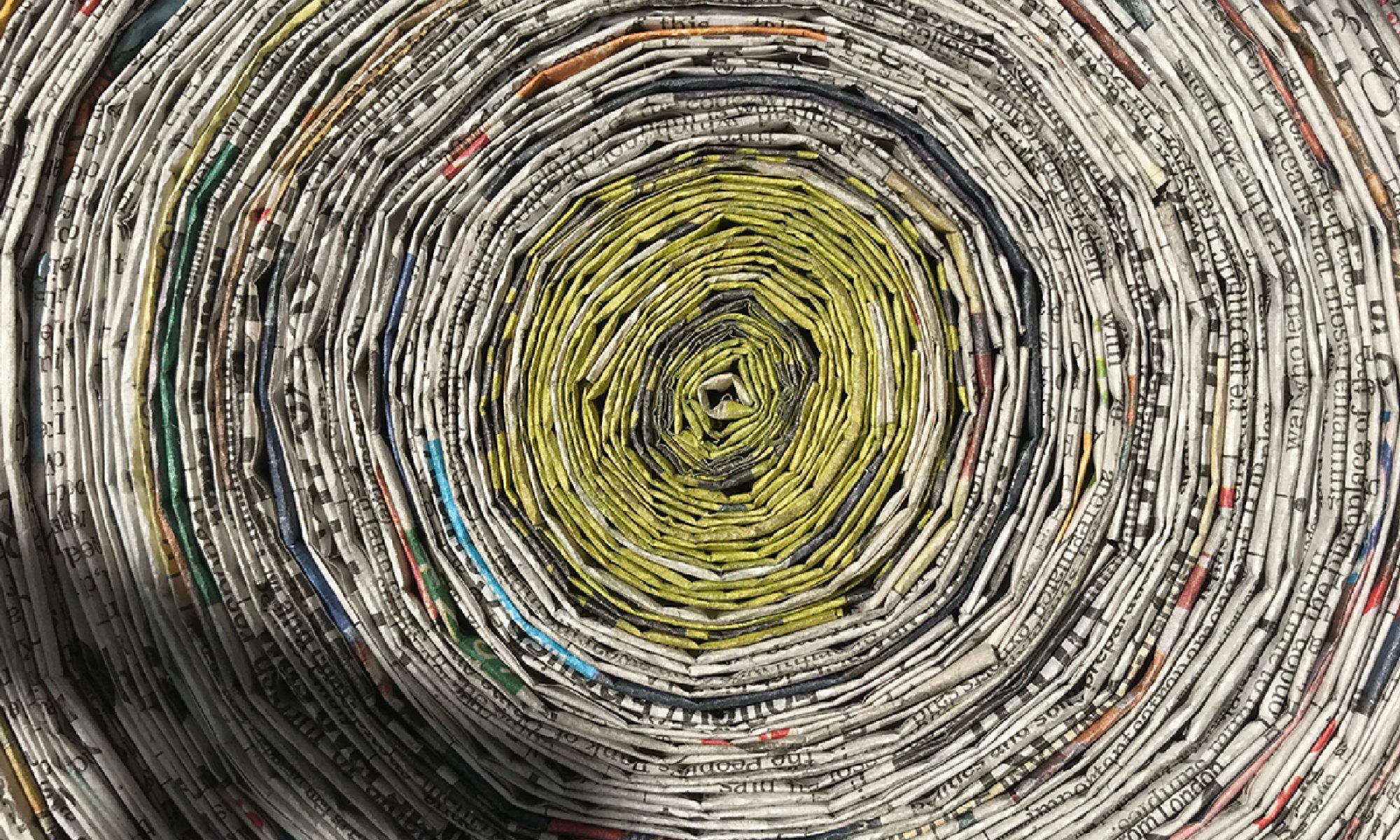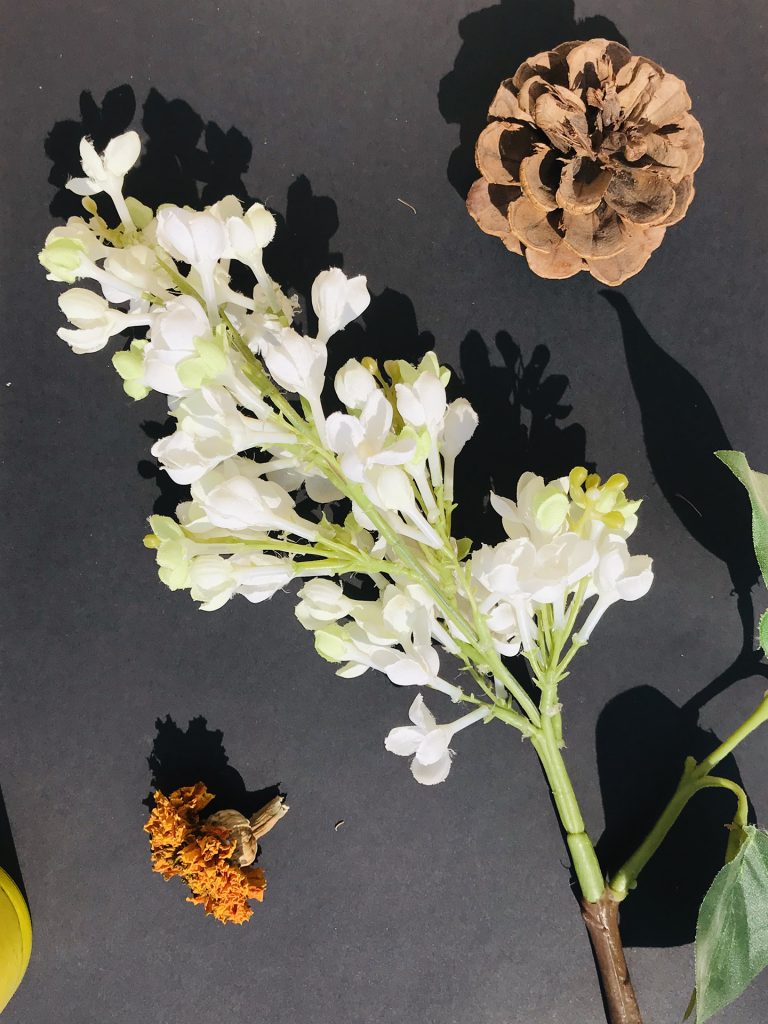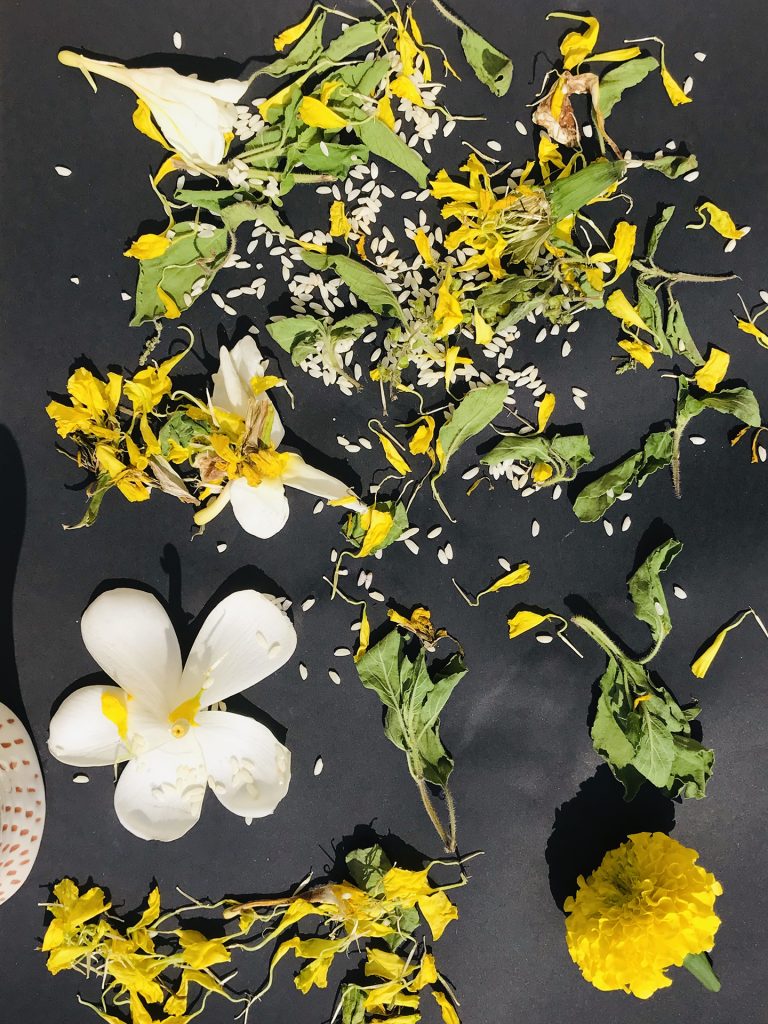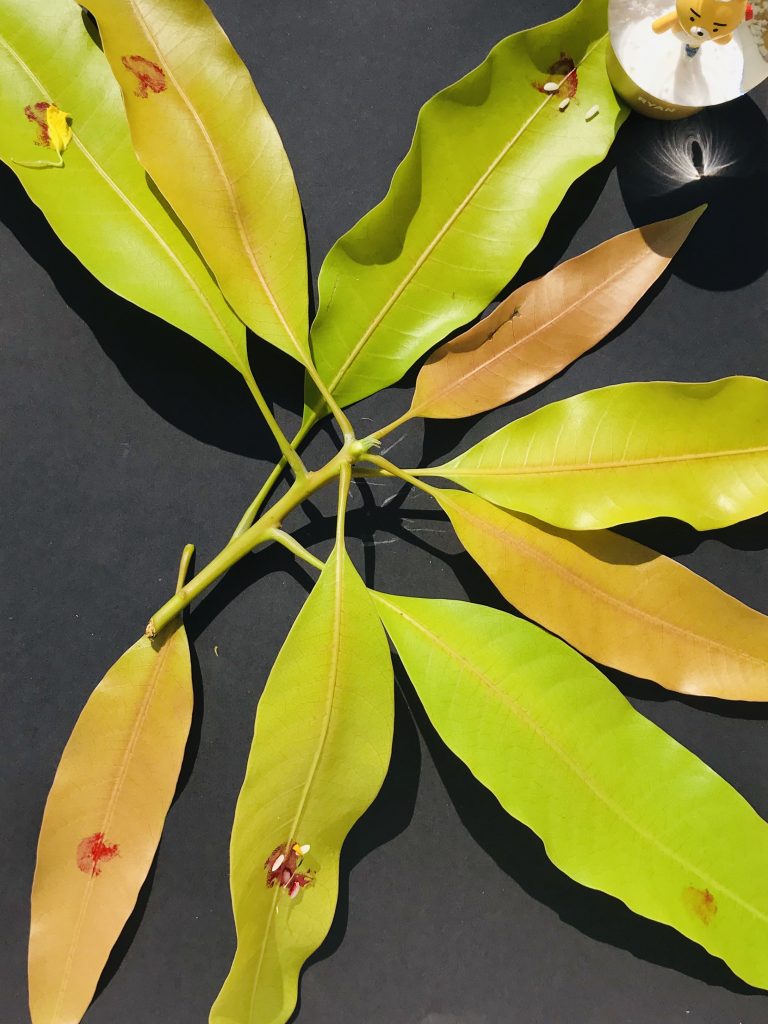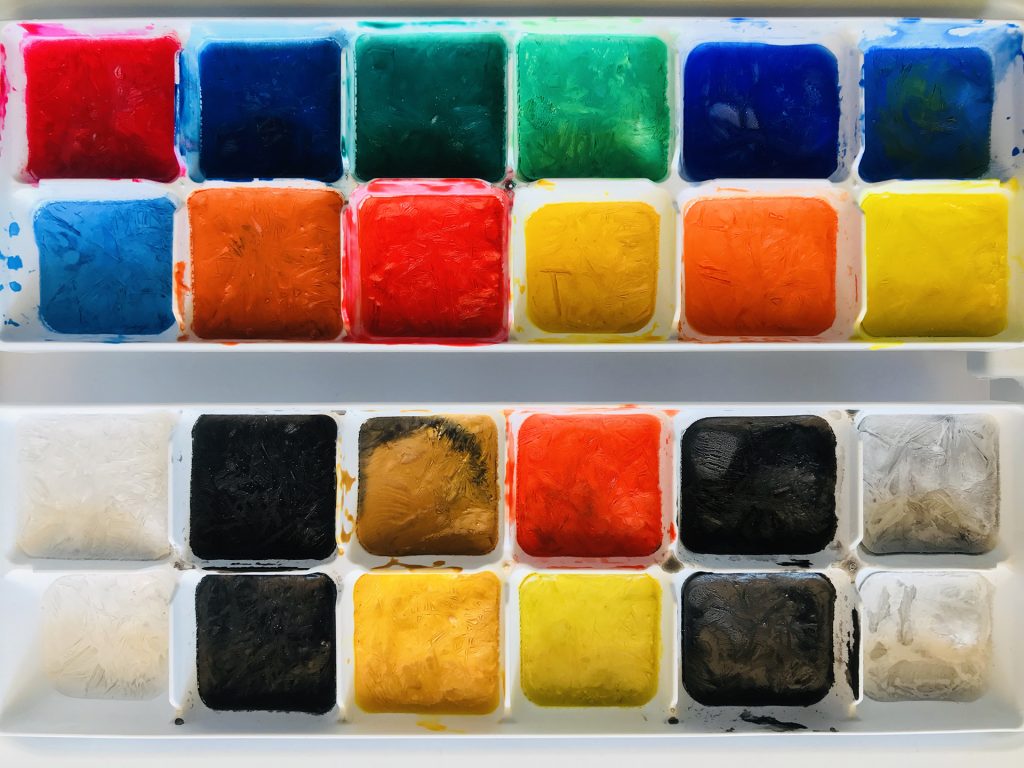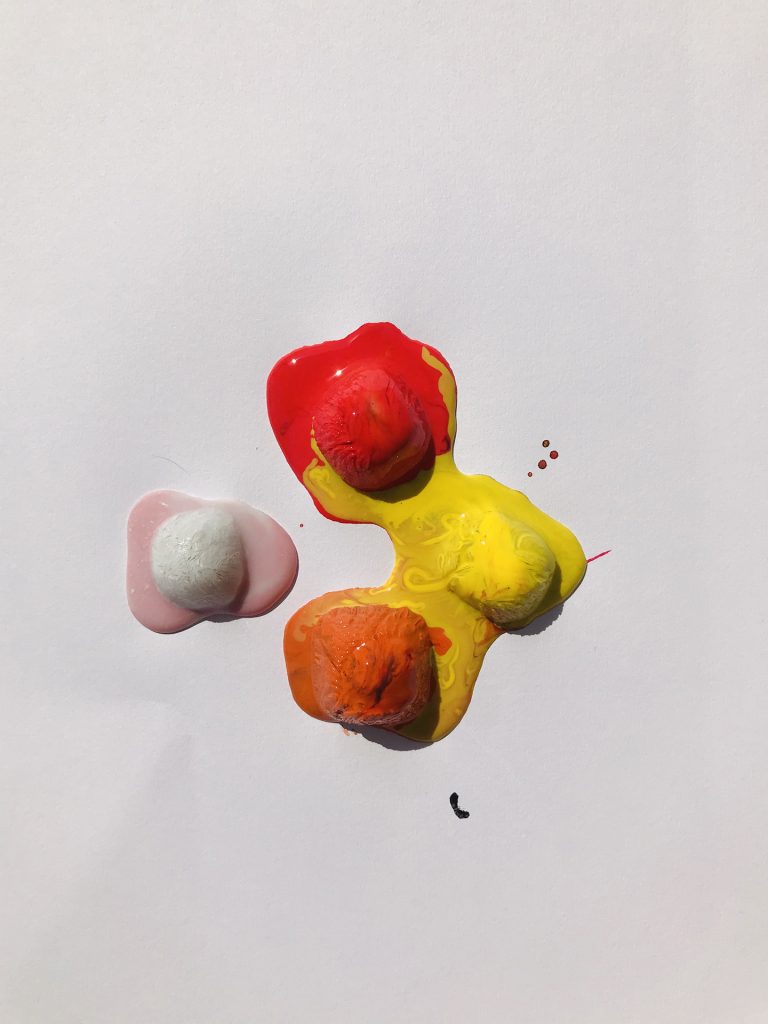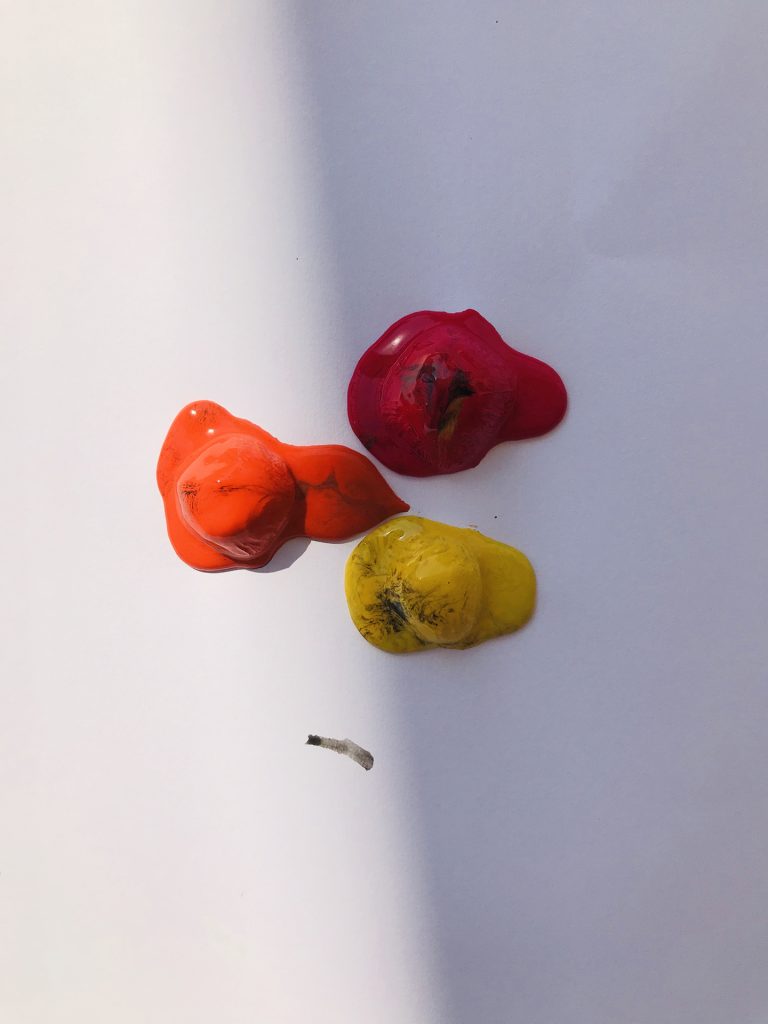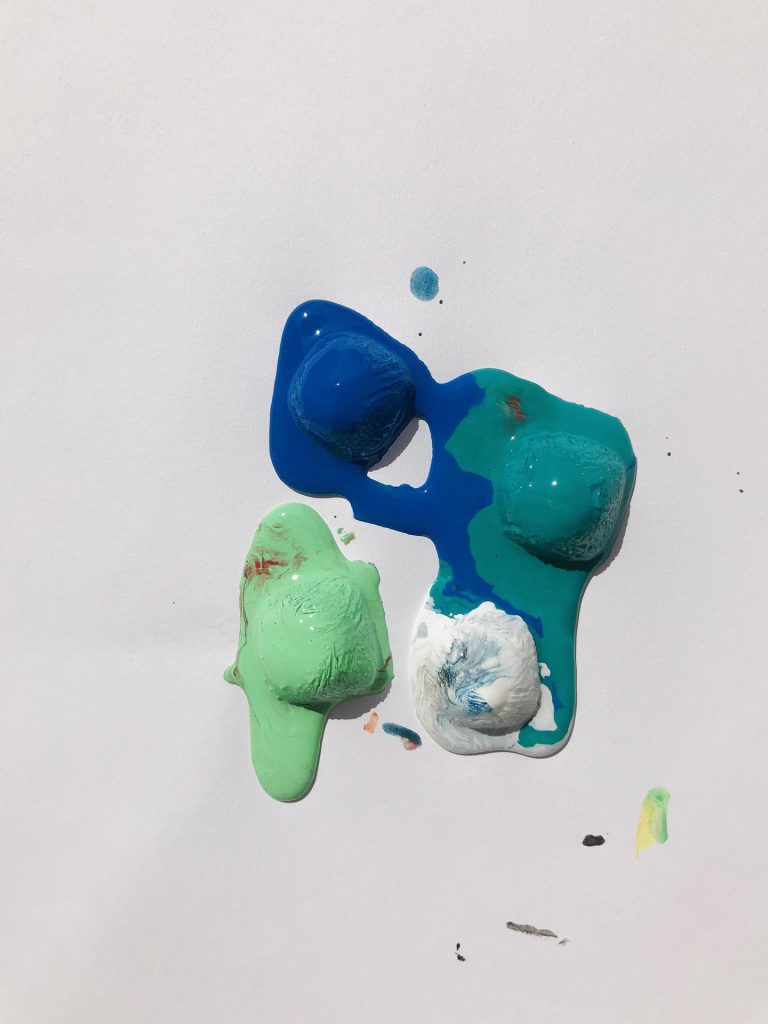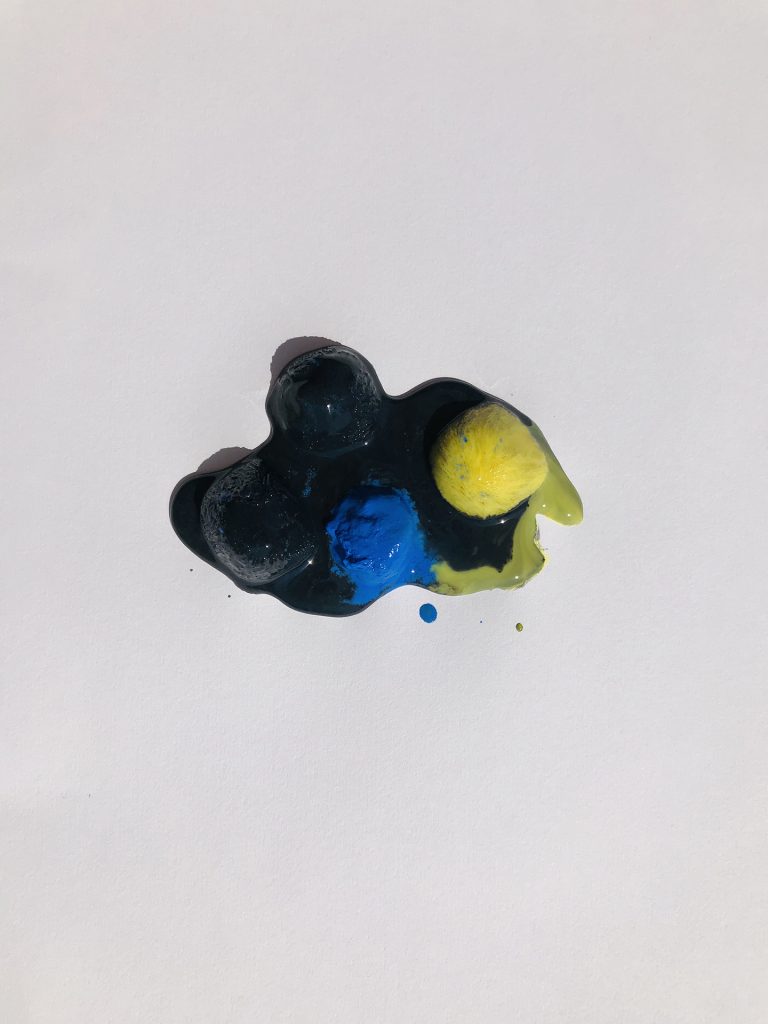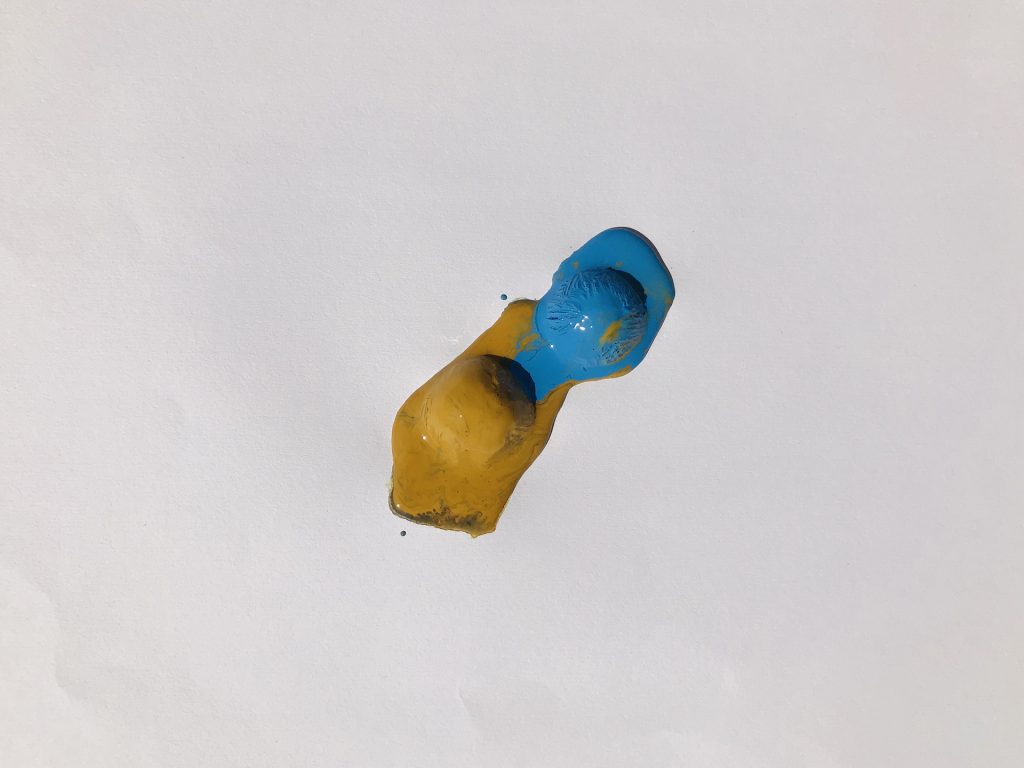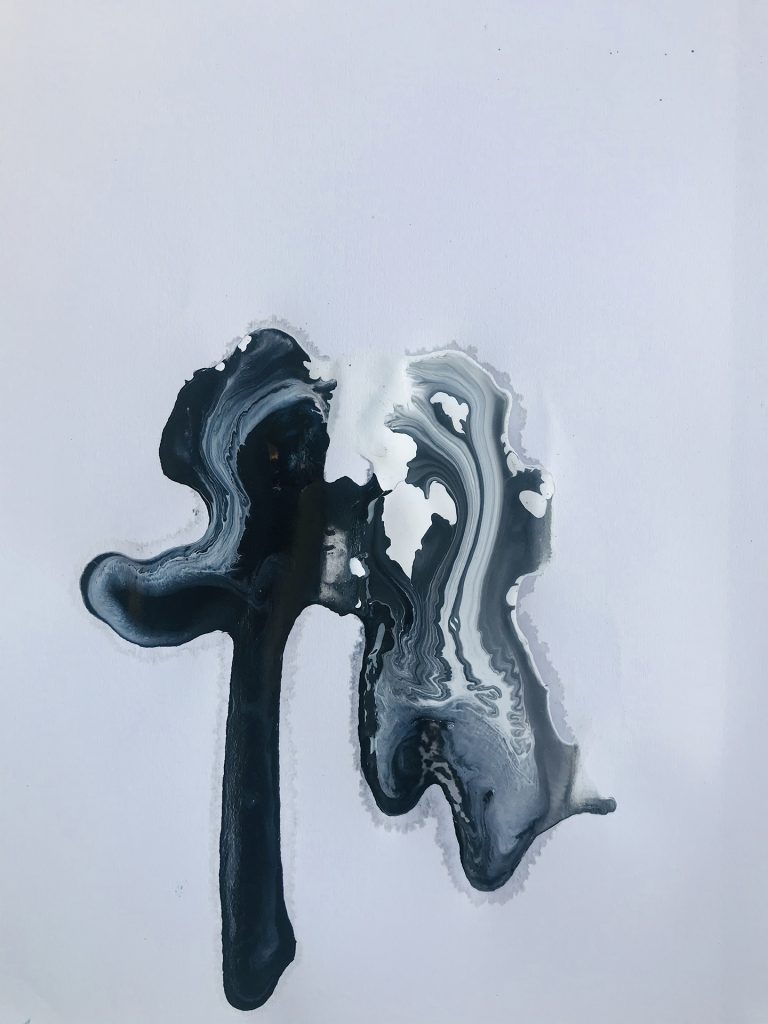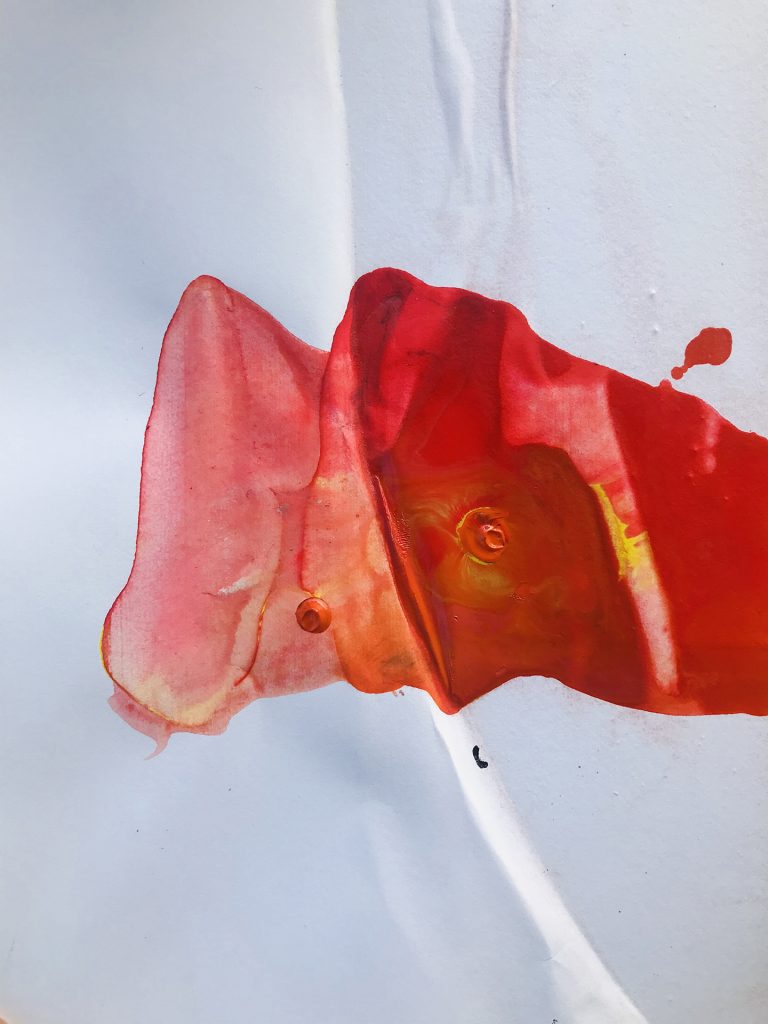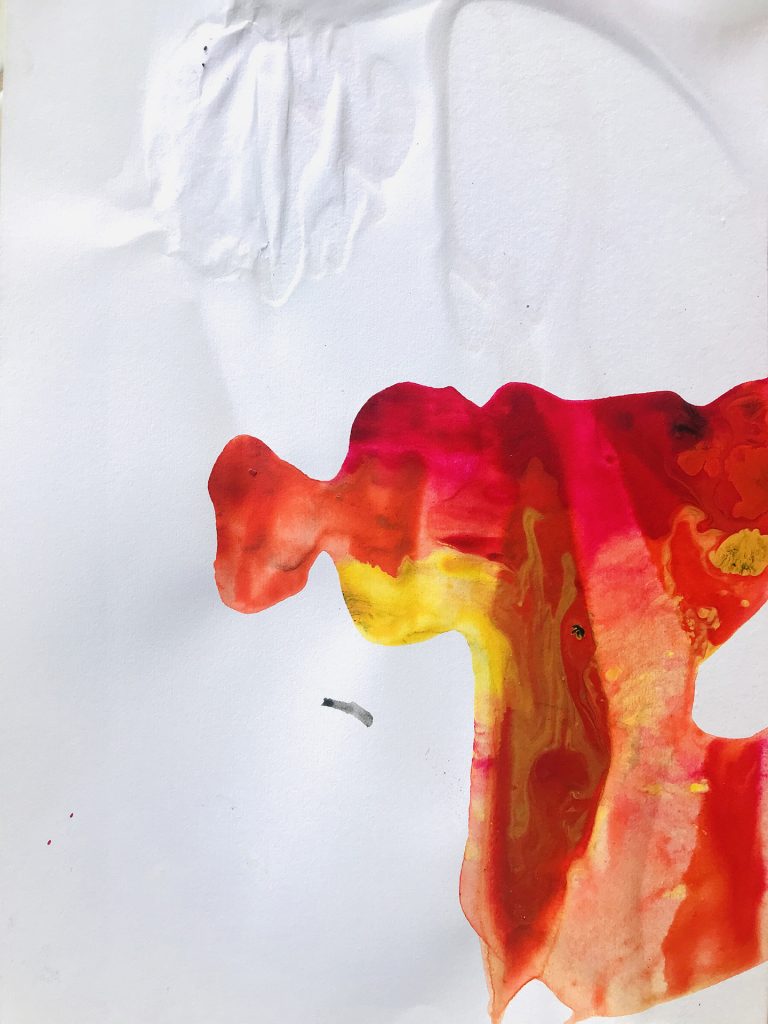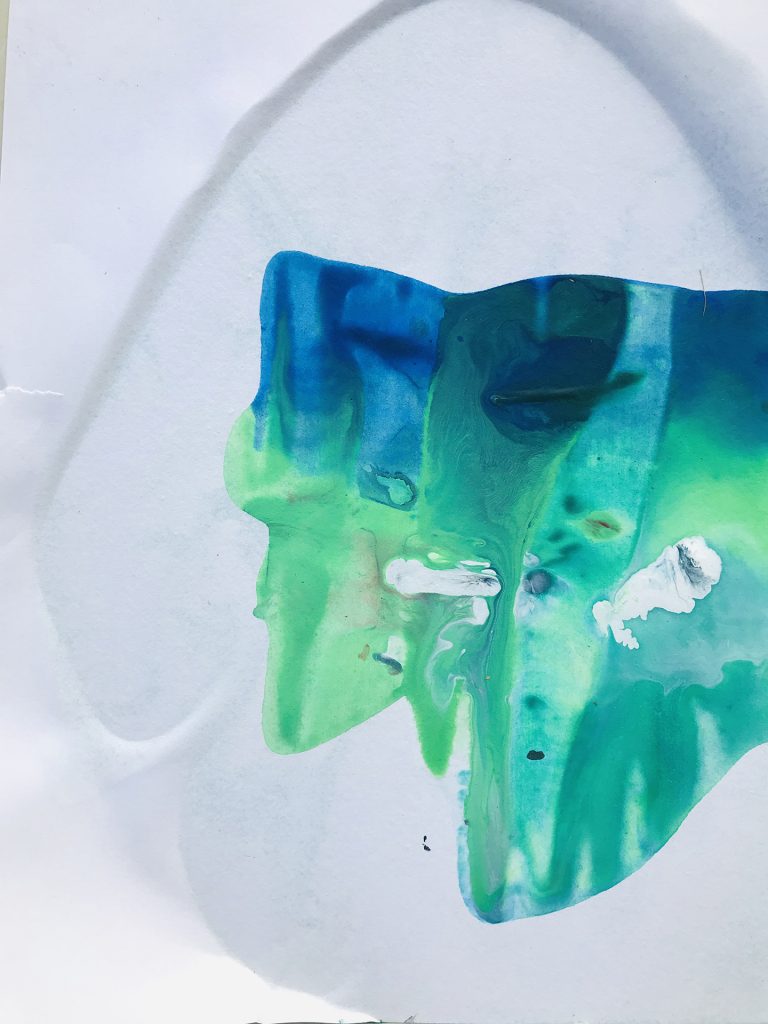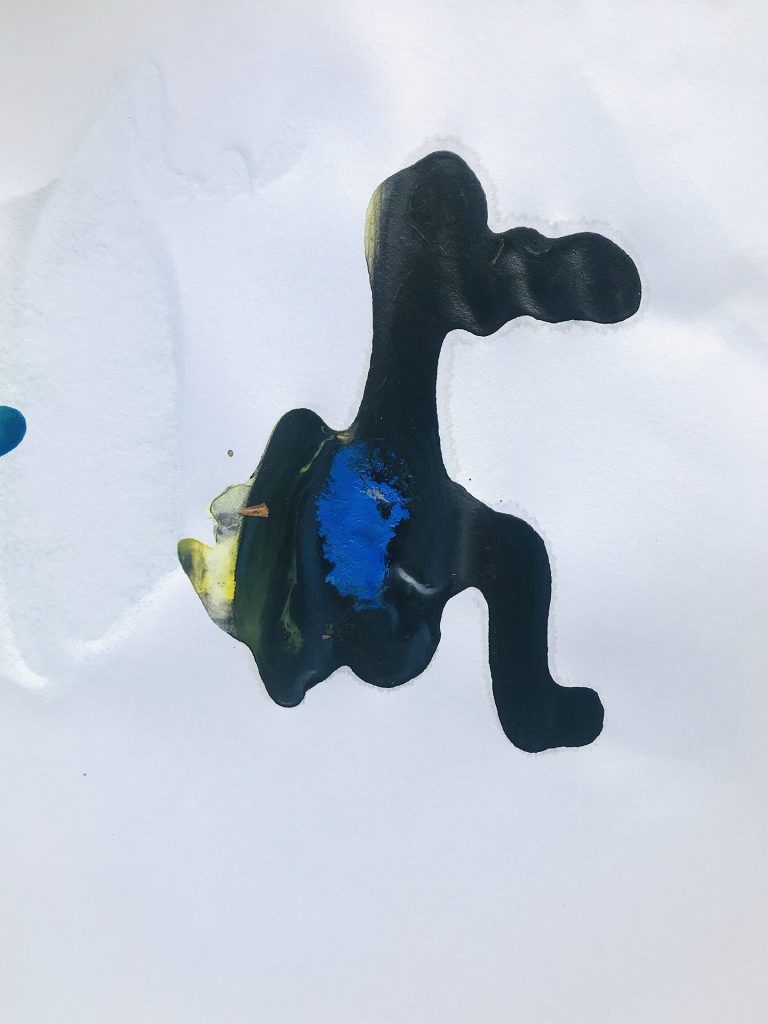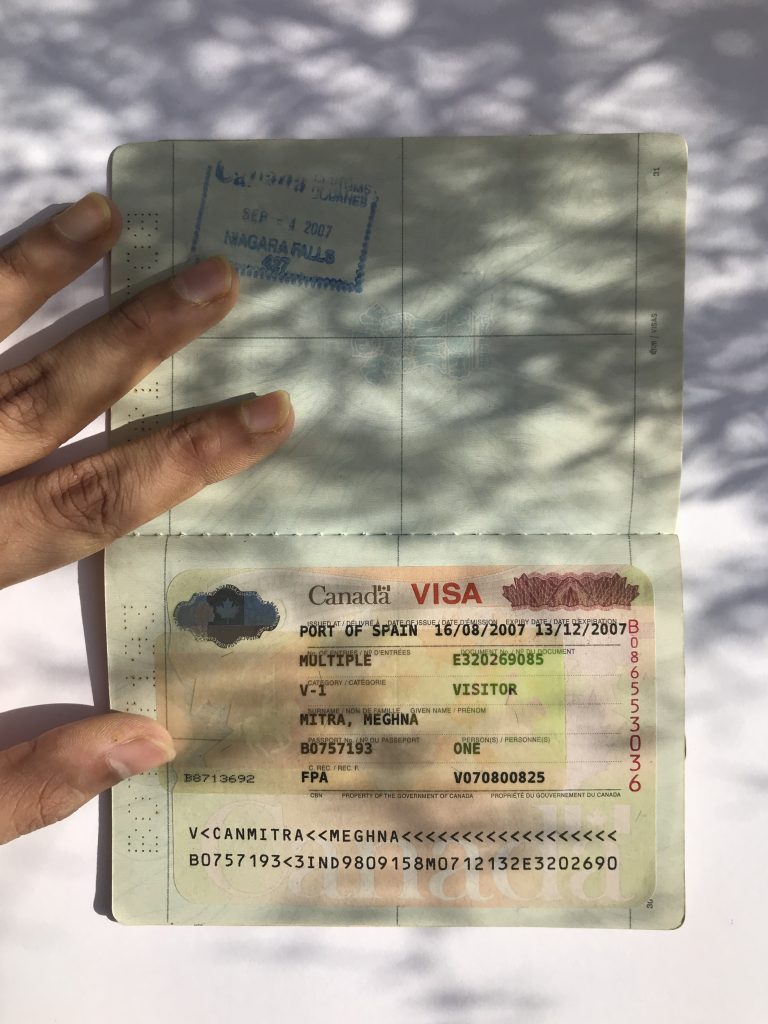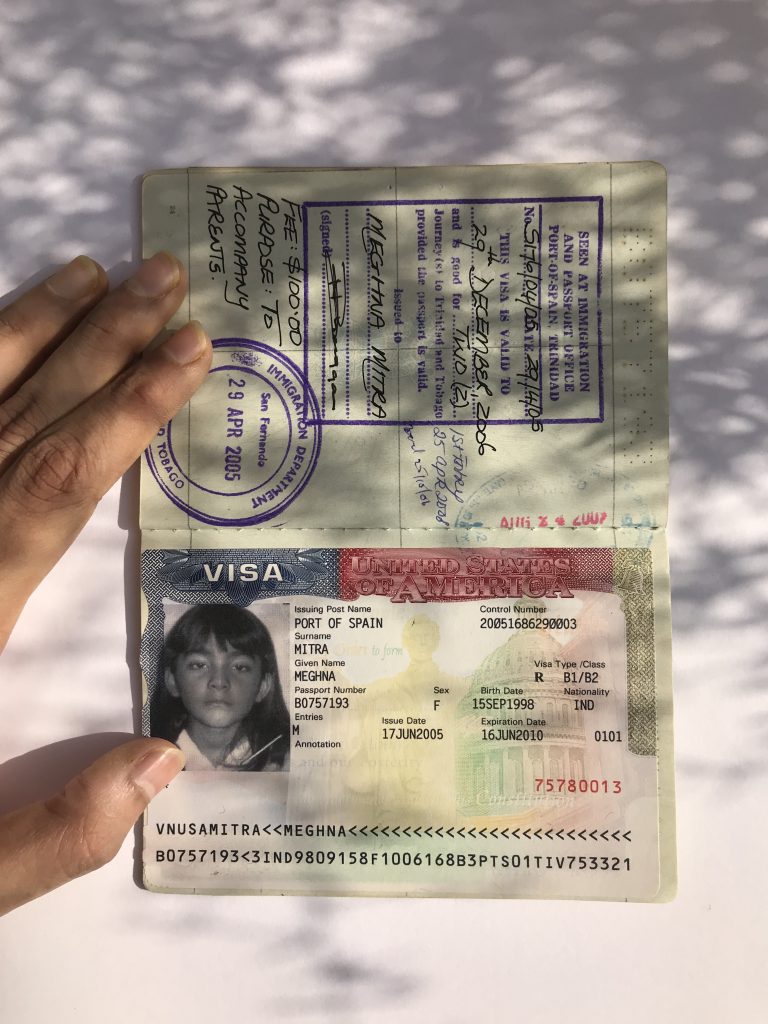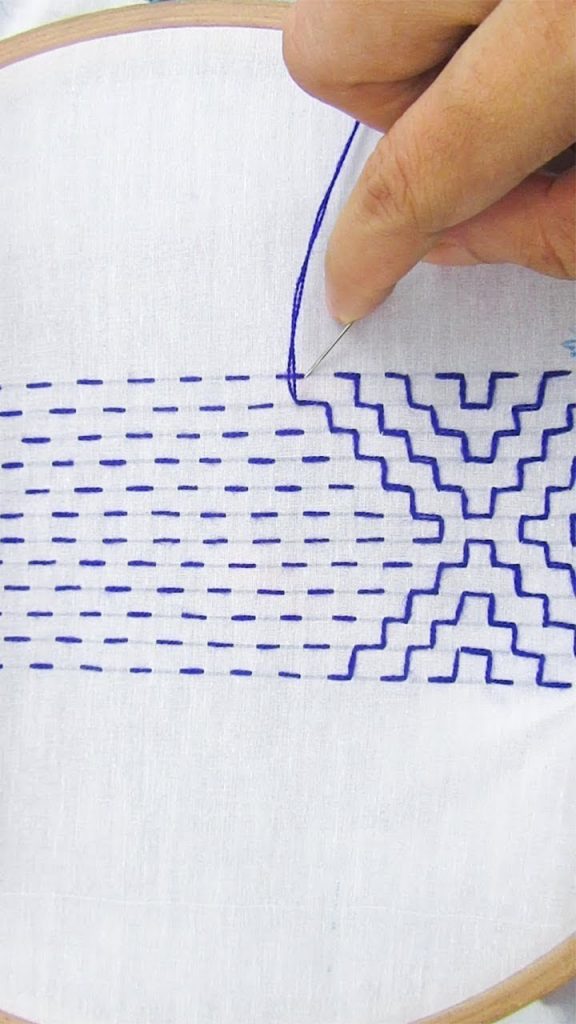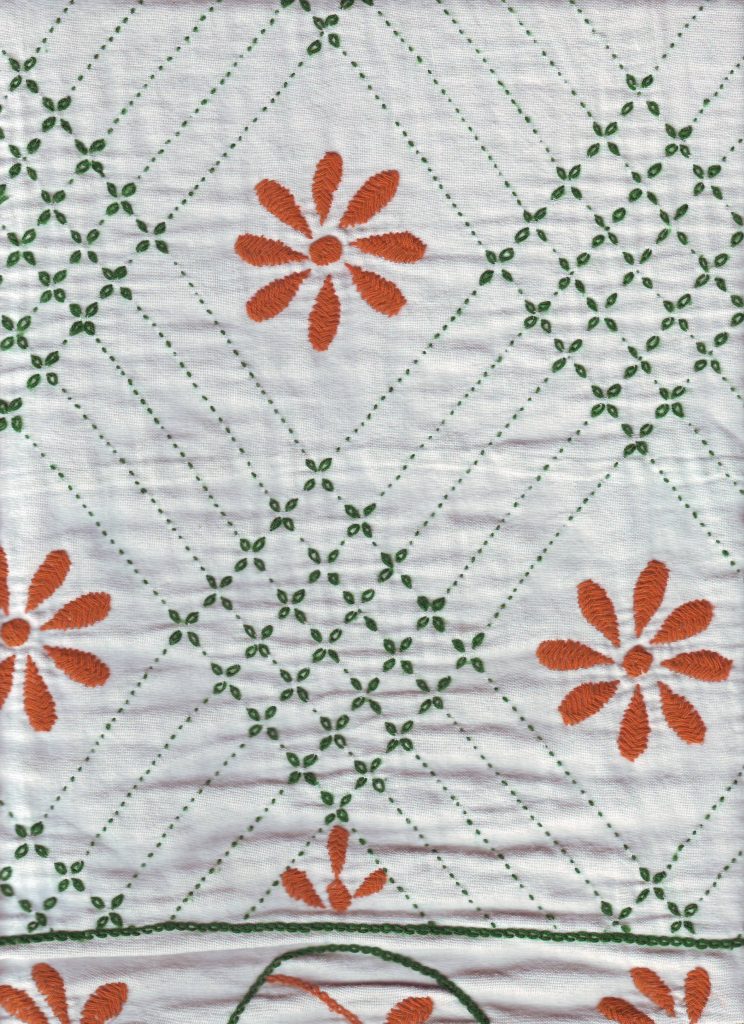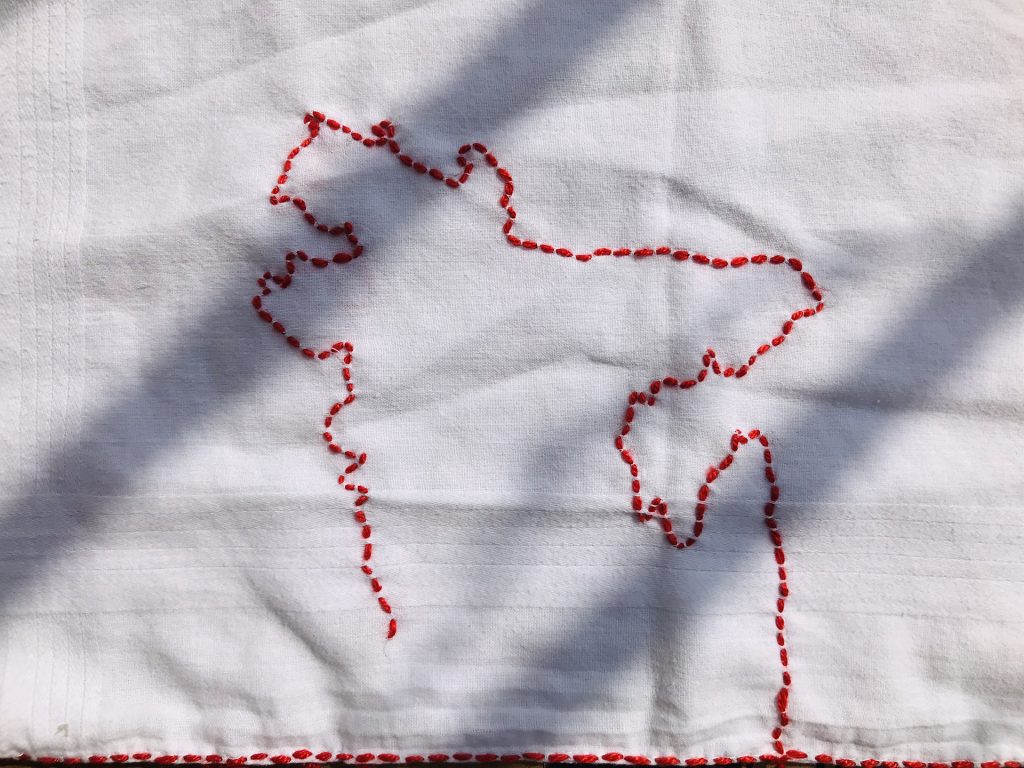“… IT TOTALLY FAILED.”
I will investigate border histories and ecology through making and experimenting with my environment.
In my earlier action, I was contemplating how the environment around me collaborate in my making? Saudi Arabia. Miles upon miles of sand, stone and sun. It got me to thinking what is the most readily available resource where I now live? Sun. Heat.
In a place where temperatures can soar upto 55 degrees celsius, heat has always been a deterrent for many activities in my daily life. I rarely step out during hot days and eagerly wait for winter months for more pleasant weather. I want to challenge that my way of thinking about the sun. Instead of disregarding it, I wanted to embrace it so I decided to experiment with the sun’s heat for my making.
For my first attempt in using sun’s heat in my making, I decided to make some sun prints using construction black paper (pictured above). The idea was that when I place objects on the construction paper and leave it out on direct sunlight for a few hours, a “tanline” of the object should be left on the paper. So I just placed whatever I had around the house. Flowers and leaves. Pinecones. Rice. I left it out in the morning and waited until the sun set to check on it and it totally failed. No “tanline” was left behind on the paper. So it was back to square one. How do I use the sun’s heat in my making?
For my second attempt at experiment with the sun’s heat, I realized I may have to think a bit more about this. I realized I was using the sun’s heat as a tool but maybe it should be a collaborator. I should give the sun some tools and let the sun make what it wants. So I decided to offer the sun some paint and paper. I mixed the paint in some water and froze it. Then I placed the ice cubes on the paper which was placed outside and let the sun do its thing and below are the results of the sun’s makings. The results (pictured below) were pretty interesting. There was also a surprise collaboration by the wind that resulted in some of the paper flying off and paint dripping. Shoutout to wind ~
My other line of investigation is into border histories. I started from my personal history with borders by looking at my passports, old and new. Every page. Every stamp. Every visa. A record of my border history. Which borders I had permission to cross? What type of permission do I have to enter these borders? For how long could I stay within those borders? From which country these permissions were issued? The design of each visa and stamp is also reflective of each country. Pictured below are my indian passport, a 2007 Canada visa and a 2005 U.S.A. visa.
On the cover of the Indian passport is the Ashoka pillar, an icon from Buddhist and Hindu faith, which symbolizes the axis mundi (the axis on which the world spins). Lots of maple leaves in the Canadian Visa and a person on a horse holding a flag?? I tried finding out what the person on a horse signifies but couldn’t find anything. Red and Blue patterns and the White House (built by enslaved African Americans) with Abraham Lincoln (16th U.S. president, abolished slavery) in the background of the sticker.
After looking through my passports, I decided to explore the broader contexts of border histories; from the personal to the ancestral. I decided to talk to my parents about it. Turns out, my grandfathers had history of travel since they both worked for the Indian military. My grandfather from my mother’s side was a mechanical engineer for the air force. He travelled to many of the places that I have been to. A few years ago, he showed me a picture of him in Bahrain when it was just a desert vs the pictures of Bahrain that I showed him which were mostly skyscapers. My grandfather from my father’s side worked for the Indian army and he travelled a lot within India till he finally settled in Kolkata to work in a steel plant. He died before I could meet him.
When I went even further back into ancestral border histories, I reached stories of Partition, when the subcontinent was divided into India and Pakistan in 1947. The partition involved the division of two provinces, Bengal and Punjab based on religion. Hindus and Muslims. The idea was for Hindus to go to the Indian side of the border and Muslims to the Pakistan side. These border of religious divide were designed by a British man by the name of Sir Cyril Radcliffe. He made that border in 5 weeks. Partition was a violent era that led to the displacement of 10-12 million people and with several hundred thousands to 2 million lives assumed to be lost. Partition affects people to this day with tense relations between India and Pakistan.
My great grandparents and their children (my grandparents) were a few of the 10-12 millions that were forced to move from their original lands in Bangladesh (formerly East Pakistan) to India due to tensions between Hindus and Muslims. Unlike me, they have no records of their border histories; in fact, they have no records at all. No birth certificates. No photographs. No I.D. There was no concepts of documents back then. What’s left of them is the memories and stories of them told by the future generations. But as I talked to my parents about my great grand parents, they couldn’t tell me much. They have very faded memories of my great grandparents. I couldn’t help but feel that the story of my great grandparents, grandparents and the millions of others that they were displaced with were fading away generation after generation.
As an attempt to record this history, I decided to embroider the India/ Bangladesh border (where my great grandparents fled from) using my dad’s old handkerchief in the Kantha style. Kantha is a form of embroidery that is practiced by the rural women of Bengal from both India and Bangladesh. Kantha refers both to the style of the running stitch and the finished cloth. Kantha means rags. The women recycled the well used cloth that turned to rags and give it new life through the stitch. Fabrics were layered together and the stitch would cover the entire cloth to provide strength. The stitching could be handed down through generations, with grandmother,mother and daughter working on the same Kantha.
Kanthas are repositories of memories of particular makers, givers, recipients, and owner.
Wandering Silk
As I was try to record and preserve the stories of my great grandparents during Partition, I thought Kantha a fitting medium. It’s a medium that lends itself to expression and story telling. But what was the story that I was telling when I stitched the Bangladesh border through Kantha? Am I taking away my great grandparent’s stories by once again creating those borders? Am I doing any justice to this medium of expression and storytelling? Am I doing any justice to my ancestor’s stories? Am I universalizing this history by stitching these borders? Am I reinforcing those borders that caused so many people pain? Am I even telling a story? I was left feeling dissatisfied with my making this week.
After my one on one with Louise, I decided to rethink my approach to to ancestral border histories. I needed to learn about my great grandparents more. As I mentioned earlier, my parents had very faded memories of them but my aunts lived with my great grandparents for many years and my parents advised me that they would definitely know more. If they are willing, perhaps, I would love to discuss with them ancestral histories and have them involved in the process of making. I don’t know how to achieve that since they live in India and I live all the way in Saudi Arabia but we’ll see about that later. Till next week!
